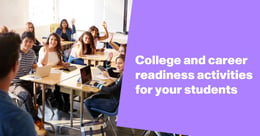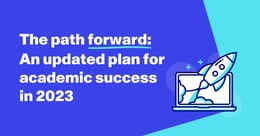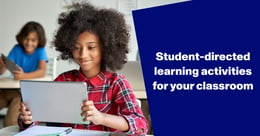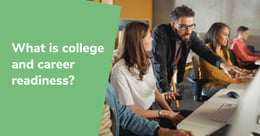
Responsive paths for learners: Dr. Shari L. Camhi and Anthony Mignella
Does your school district have a North Star? With a guiding principle for where you have to take your learners, it becomes that much clearer how to get there.
At the Baldwin Union Free School District in New York state, district leaders shared how they’ve worked hard to maintain the forward momentum necessary to bring their students—and their schools—into the future. Of course, the added burden of the pandemic complicated matters, but the administration remains committed to forging ahead.
“I think we’re responsive to our students and our teachers, but we’re also responsive to their future,” said Dr. Shari L. Camhi, superintendent of schools for the district. “I believe that we’ve caught up, and now we’re in the process of going beyond that.”
Along with Anthony Mignella, assistant superintendent for instruction at Baldwin UFSD, Camhi shared innovative strategies to help ensure students are ready for the future that awaits them.
Painting a picture of the coming years
We may not know everything that’s in store, but we know enough to make some educated guesses. In this Long Island district, a wide variety of thought leaders, including K-12 teachers and administrators, have been working together to identify key trends that they expect will influence what learning and work will look like over the next several years. Their framework is called Baldwin 2035.
This initiative aims to ensure the district is putting adequate structures in place to provide students with the relevant skills and knowledge they’ll need to succeed for years to come.
“2035 is right around the corner. But 2040, 2050—it’s going to be a very new world,” said Camhi. “It’s going to be a different world of work, a different world of communication.”
Innovation in action: Collaborating with community colleges
A significant component of Baldwin’s forward-thinking approach is to create opportunities that are truly aligned with the interests of current students in the district.
“We believe that you design programs around kids—not that you design a program and then you filter kids into those programs,” said Camhi.
For instance, the district realized that several of its seniors were ready for the next step in their educational journeys before they actually graduated. The solution? Send them to college.
“We have a cohort of high school seniors who are full-time college students on the community college campus,” said Camhi.
Through the program, learners are able to get a head start on their college credits and begin their transition to a higher education setting.
Career-specific academic alignment
Within the district, “academic academies” allow students to connect their schoolwork with practical skills in specific professional pathways. One such academy is focused on developing future educators to help address staffing shortages in the sector and to provide students with an attractive avenue for pursuing a career in teaching.
Camhi shared how students who are taking advantage of this opportunity benefit from course alignment between their high school class work and local college requirements. As a result, students can earn their undergraduate degree sooner or use the extra time to pursue a master’s.
Harnessing technology for inquiry-based learning and academic support
The pandemic exposed a new norm for communication in the digital age, and once the switch was flipped, it stayed there.
“Students became accustomed to messaging their teachers and expecting a reply about the work in a timely manner,” said Mignella.
Implementing Paper allowed the district to shift that burden away from teachers while providing students with 24/7 support.
District leaders are also enthusiastic about using the Essay Review function to help students get initial feedback on writing assignments, freeing teachers up to focus on targeted support after students have already received an initial layer of assistance.
Often, dedicated district educators are already going the extra mile to provide support after school. Mignella sees Paper tutors as helping fill in the gaps when teachers can’t be available to work with their students directly, either because they’re out sick for the day or the learner is looking for help at odd hours.
Camhi was enthusiastic about Paper’s ability to bolster efforts in the district around inquiry-based learning. That’s because these tutors don’t give away answers. Instead, they use tailored questioning to help students uncover what they already know and guide their discovery, relative to the concepts at hand.
Calibrating the compass: Ushering students into the future
With the Baldwin 2035 framework in place, the school district is charting a course that will get students where they need to go in the coming years. Partnerships with area higher education institutions will help elevate these efforts, as will career pathways and technological solutions like 24/7, 1:1 academic support from Paper. It’s easy to see how a strong focus on guiding principles can translate into concrete actions that support student achievement.
This interview is part of a series with educational leaders to highlight their perspectives on the changing realities of education.

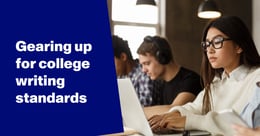
![3 ways game elements can drive educational engagement [Infographic]](https://paper.co/hs-fs/hubfs/Paper-Blog_3-ways-game-elements-can-drive-educational-engagement.jpg?width=260&height=136&name=Paper-Blog_3-ways-game-elements-can-drive-educational-engagement.jpg)
